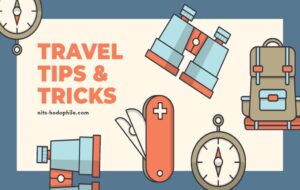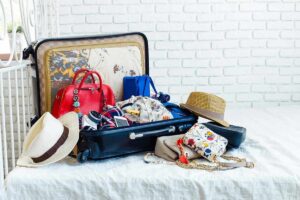First thing that comes in mind when I hear the word trekking is, covering a distance to reach the top of a peak with many trails winding up, down, over and around mountains. Sometimes crossing waterfalls, rivers, lakes and bridges deep inside the woods and large pine trees of the mountains or snow capped mountains. So, here I am to guide you with best tips for trekking that should be kept in mind.
Tip 1: Do a proper research about the trek
I personally do hours of research and thorough readings of the places that is on my next trip list and it really helps me in exploring the place fully as I already have the information. In fact I make a map and pointers that helps me in deciding what to visit and how to plan. So, making an itinerary before reaching the place is a good practise so that you don’t get confused and lost after reaching the place.
Tip 2: Go Light Weight
Since you will be trekking with your luggage on your back, you need to pack lightly with only the essentials without anything extra to save yourself unnecessary pain in shoulders due to steep climb and slow you down during the trek. Just pack your daily essentials and counted numbers of cloths.
Tip 3: Dry-Fit Cotton Pants and T-shirts
Wearing dry-fit cloths during a trek is best choice reason being if you are trekking in snow, rain or summers your cloths will get dry soon and you will not have to be wet for too long. Dry-fits also helps to avoid the smell of sweats as they are really light weight and are turned out to be a light weighted cloths helping you pack light.
Tip 4: Number of Socks
The most common and important thing to carry with you during a trek is keeping extra socks. You can repeat the upper wear but need to change the socks daily and there are chances your socks get wet as you cross water streams in the way so always keep extra pair of socks that too depending on the weather woolen socks for treks in snow and cotton socks for treks in valleys or summers.
Tip 5: Trekking Shoes, always prefer waterproof shoes
Just like socks there are chances that your shoes gets wet when you come along the water streams on your trek, so to avoid mess with your shoes buy a water proof shoes for trekking. Also, focus on the grip of the shoe to avoid slipping while climbing the mountains or walking over the hard snow that becomes slippery. Getting a water proof shoe with good grip is a must for any trek.
Tip 6: Wear comfortable trekking clothes
I believe when you are travelling you should wear comfortable cloths depending on the place you are travelling to. While trekking also prefer very comfortable cloths since you will be climbing, jumping and chances of getting wet would be really high. It’s suggested not wear anything tight, wearing dry-fit joggers is really appreciated!!
Tip 7: Pack enough jackets, fleece and sweaters
Sometimes people get confused with the weather on the planes and on the hill. You would find it really cold during the nights up there even in summers. So pack warm clothes with you to avoid cold during nights and keep yourself warm even in the minus temperatures in many places to get a good sleep otherwise you will end up awake whole night.
Tip 8: Pack a windcheater or poncho
Any trek’s most essential thing is a windcheater or a poncho. Mountains always gives surprises so you never know when it will rain up there and when not so packing a windcheater or poncho will help save you in rains. I would suggest to pack a poncho as you can keep your bag also inside it to save it from rain.
Tip 9: Couple of portable chargers
Trekking on top of the hill, you won’t get any charging point and if it’s at a high altitude the battery of your gadgets would drain really fast. So keeping couple of portable chargers would help you get some pictures and videos from the top. An advice here, switch your data off once you start your trek and once network is gone keep the phone at airplane mode to save the battery.
Tip 10: Get a trekking pole for yourself
Getting a proper trekking pole is an ideal equipment for a perfect grip instead of using a wooden stick and getting scratches all over the palm. On the high altitude treks trekking pole is a must since it would help in save energy and climb sooner.
Tip 11: Packing Quick Eatables and Water Bottle
A trek needs more energy to climb and reach the destination on time so despite of having junks try to take energy bars, peanuts, chocolates and dry fruits with you to keep yourself full for longer period of time. Second thing few treks don’t have shops nearby so try to take a water bottle with you that you can fill on the way from waterfalls or river streams. But most important thing to remember is please take your empty packets back along with you to keep the mountains alive and clean.
Tip 12: Trek with a guide
People must take a guide in case the trek is for longer hour or days and if the trek is secluded since you would not be able to find the right way. Guides would help in carrying the luggage and provide proper direction to climb up the mountains. In case the place is not secluded and there are many passer-by then of course you won’t need one and can cover the distance alone or with friends.
High Altitude Trek Main Points to Remember
High Altitude treks affects human body so before going on a high altitude treks people need to get trained with trainings like swimming, strength training and keep on going on small treks at least for an year. The oxygen saturation of haemoglobin determines the content of oxygen in blood. After the human body reaches around 2,100 metres above sea level, the saturation of ox haemoglobin begins to decrease rapidly.
Altitude Sickness
Phenomenon of altitude sickness is a common thing to happen with anyone travelling to a high altitude and as the oxygen level up there is very low it becomes really difficult to breath properly. It generally happens once you are 2500 m above sea level.
Acute Mountain Sickness (AMS), can become a medical emergency if ignored. This can happen with anyone with any age, sex or physical fitness. Also, just because you may not have had it before, this does not mean you will not get it on another trip.
Symptoms of Altitude Sickness
Headache
Feeling and being sick
Dizziness
Tiredness
Loss of appetite
Shortness of breath
Tactics on High Altitudes
Use a compass to be on right track
Good knowledge to start a fire without lighters as lighters doesn’t work at high altitude
Good Knowledge of finding trails
Know how to survive on hazardous situation
Instant handy skills
All tools and equipment knowledge




